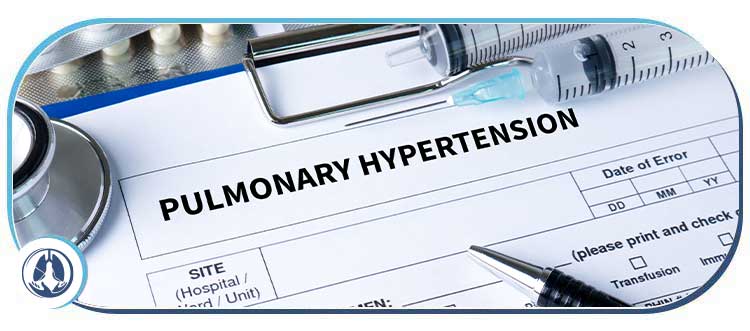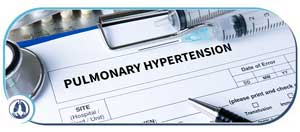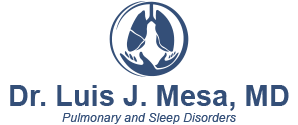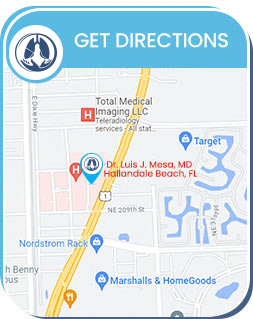Pulmonary Hypertension Doctor Q&A
Pulmonary hypertension affects arteries in the lungs and the right side of the heart. Shortness of breath, dizziness, and chest pressure are common symptoms. Get help for pulmonary hypertension or any other pulmonary disorder at Dr. Luis J. Mesa, MD. Our board-certified doctor is here to provide the best possible treatments for you and for your loved ones. Contact us for more information or schedule an appointment online. We are conveniently located at 1250 E Hallandale Beach Blvd Suite 205 A, Hallandale Beach, FL 33009.


Table of Contents:
What is pulmonary hypertension?
What are the causes of pulmonary hypertension?
What is the main symptom of pulmonary hypertension?
What are the four stages of pulmonary hypertension?
Why do the pulmonary arteries narrow?
How is pulmonary hypertension diagnosed?
Is pulmonary hypertension curable?
How can Dr. Luis J. Mesa, MD help me with pulmonary hypertension?
Pulmonary Hypertension is a rare type of high blood pressure that can occur in some individuals. Pulmonary hypertension disturbs the pulmonary arteries and capillaries. The blood vessels carry blood from the lower right chamber to the heart into the lungs. As the pressure begins to build up in the pulmonary blood vessels, the heart then begins to work harder to pump blood into the lungs. Over time, it will weaken the heart muscle, and then lead to heart failure, and death.
If you are experiencing recurring shortness of breath during physical activity, you may be dealing with pulmonary hypertension or another pulmonary disorder. As such, it may be a good idea to visit a pulmonary doctor for testing and possible treatment. We would be pleased to provide both to you at Dr. Luis J. Mesa, MD!
Pulmonary hypertension is a form of high blood pressure that occurs within the arteries leading from the right side of the heart into the lungs. When pulmonary hypertension occurs, those arteries develop increased muscle mass in the artery walls. Consequently, the decreased space within the artery for blood to flow through increases the pressure that the blood exerts against the artery walls, leading to pulmonary hypertension.
There are five types of pulmonary hypertension that are delineated based on their causes. As such, the five different types of pulmonary hypertension are as follows:
• Pulmonary arterial hypertension (PAH): causes of PAH include genetic mutations, use of prescription or illicit drugs, such as methamphetamines, congenital heart disease, mixed connective tissue disorders (MCTDs), such as lupus or scleroderma, HIV infection, or cirrhosis
• Pulmonary hypertension caused by left-sided heart disease: examples include mitral valve disease, aortic valve disease, or heart failure in the left ventricle
• Pulmonary hypertension caused by lung disease: examples include chronic obstructive pulmonary disease (COPD), pulmonary fibrosis, or obstructive sleep apnea (OSA)
• Pulmonary hypertension caused by chronic blood clots: examples include pulmonary embolism or deep vein thrombosis (DVT)
• Pulmonary hypertension is caused by other medical conditions: examples include metabolic disorder, kidney disease, tumors pressing against pulmonary arteries, inflammatory disorders, and blood disorders.
The average heart has two upper chambers which are known as the atria, and two lower chambers which are known as the ventricles. Each time blood is pumped through the heart, the lower right chamber then pumps blood into the lungs through the large blood vessel. Blood begins to release carbon dioxide and picks up oxygen within the lungs, the blood which typically flows through the blood vessels within the lungs and goes to the left side of the heart.
Changes occur within the cells that line the pulmonary arteries and can cause the walls of the arteries to become stiffer, thick, and swollen. The changes that occur slow down or even block the blood flow through the lungs which is what causes pulmonary hypertension. Depending on the cause, pulmonary hypertension is categorized into five groups.
Group 1 – Pulmonary arterial hypertension
Group 2 – Pulmonary hypertension which is caused by the left-side heart disease
Group 3 – Pulmonary hypertension which is triggered by lung disease
Group 4 – Pulmonary hypertension which is caused by chronic blood clots
Group 5 – Pulmonary hypertension which is triggered by other health conditions
The first and primary symptom of pulmonary hypertension is shortness of breath, also known as dyspnea, that occurs with everyday activities, such as climbing a hill or stairs. As pulmonary hypertension progresses, you may also experience shortness of breath while at rest.
Other symptoms of pulmonary hypertension include the following:
• Bluish tinge to your lips and skin due to cyanosis
• Chest pressure or pain (angina)
• Decreased appetite
• Dizziness, faintness, or light-headedness
• Edema, or swelling, in the ankles, legs, and abdomen in later stages of pulmonary hypertension
• Fatigue
• Heart palpitations or racing heart rate
Pulmonary Hypertension is broken up into four stages based on the criteria that were created by the World Health Organization:
Stage 1:
The condition does not limit the individual’s physical activity. They do not experience any symptoms which may be considered noticeable during periods of physical activity or rest.
Stage 2:
Condition slightly limits the individual’s physical activity. They experience noticeable symptoms during periods of physical activity, but non during periods of rest.
Stage 3:
Condition pointedly limits the individual’s physical activity. They will experience symptoms during periods of some physical activity as well as physical exertion, but never during periods of rest.
Stage 4:
The individual will not be able to carry out any type of physical activity without symptoms arising, even during times of rest.
Early on in pulmonary arterial hypertension, there may not be any noticeable symptoms, as the condition begins to worsen, the symptoms will become more noticeable. Some of the signs and symptoms of pulmonary arterial hypertension include:
• Hard to breathe
• Fatigue
• Dizziness
• Fainting
• Chest pressure
• Chest pain
• Rapid pulse
• Heart palpitations
• Bluish tint to the lips and skin
• Swelling of the ankles and legs
• Swelling with fluid that occurs inside the abdomen, this usually occurs within the later stages of pulmonary hypertension
Often pulmonary arteries narrow due to other medical issues that have previously occurred, including congenital heart defects, infection during pregnancy, or a genetic abnormality. Some adults and children develop these narrowed lung arteries after they were born due to blood-clotting issues.
Pulmonary hypertension is often hard to diagnose early due to it not being able to detect during routine physical exams. To diagnose pulmonary hypertension, a doctor will need to perform a physical exam and review all of the signs and symptoms you are dealing with. You may also have to answer questions about your medical history and family history.
Your doctor may also have blood and imaging tests completed to help diagnose pulmonary hypertension, these other tests include:
• Blood tests
• Chest x-rays
• Electrocardiogram
• Echocardiogram
• Right heart catheterization
• Computerized tomography
• Magnetic resonance imaging
• Lung function test
• Sleep studies
• Ventilation/perfusion scan
• Open-lung biopsy
• Genetic testing
While there is no known cure for pulmonary hypertension, several treatment options have proven to be highly effective at managing the condition and reducing symptoms. With that in mind, some treatment options for pulmonary hypertension include the following:
• Calcium channel blockers, to relax the artery wall muscles and reduce calcium buildup in the arteries
• Digoxin, which strengthens the heartbeat and helps it pump more blood
• Diuretics, commonly referred to as water pills, as they help drain excess fluid from the body
• Endothelin receptor antagonists, which reverse the effects of endothelin, a substance that narrows artery walls
• Guanylate cyclase (GSC) stimulators, which increase nitric oxide in the body to relax pulmonary arteries and lower their blood pressure
• Oxygen therapy
• Sildenafil (Viagra) and tadalafil (Cialis), to open blood vessels in the lungs
• Vasodilators, which relax and dilate narrowed blood vessels to improve blood flow
• Warfarin, which is a blood thinner prescribed for lowering blood pressure
At Dr. Luis J. Mesa, MD, we can help with pulmonary hypertension in several ways, including testing and various treatment options. Dr. Mesa is board-certified in pulmonary medicine with over twenty years of experience. As such, he can bring an abundance of expertise and experience in treating pulmonary hypertension to help you with your condition!
For more information about pulmonary hypertension or an appointment with us at Dr. Luis J. Mesa, MD, please feel welcome to call us or book an appointment right here on our website. We serve patients from Hallandale Beach FL, Aventura FL, Hollywood FL, Golden Glades FL, Miramar FL, Hialeah FL, Fort Lauderdale FL, and BEYOND.

Additional Services You May Need
▸ General Pulmonary Medicine + Pleural Disease
▸ Sleep Medicine
▸ Internal Medicine
▸ Critical Care Medicine
▸ Telemedicine
▸ Pulmonologist
▸ Sleep Disorder Treatment
▸ Obstructive Sleep Apnea (OSA) Treatment
▸ Asthma Specialist






